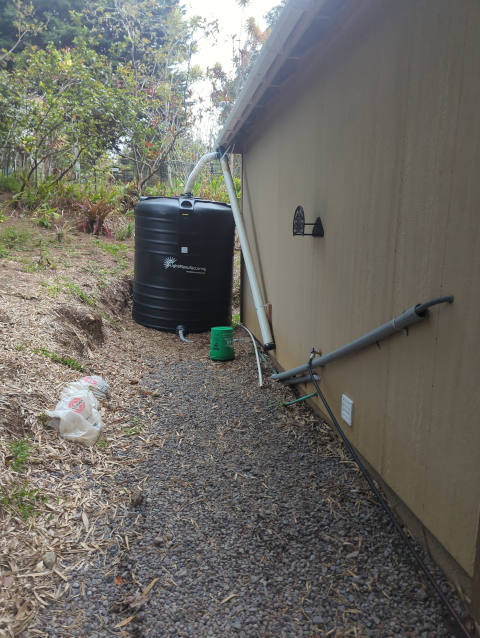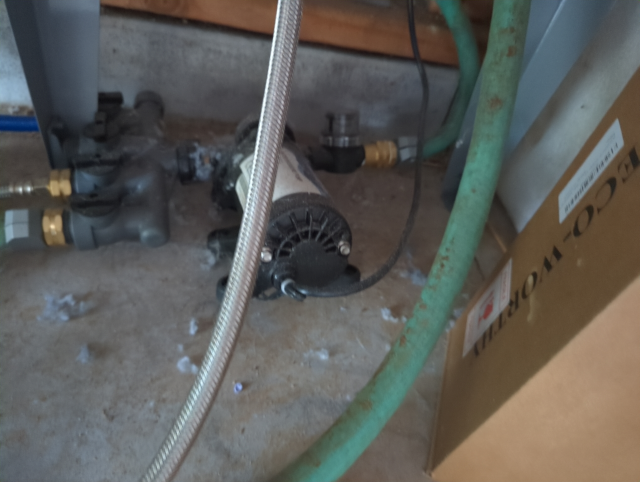
After my freeze-and-burn shower experience yesterday, we decided to switch the house over to our catchment water supply until the water department figures things out. I had always intended that as an emergency measure, but emergency measures are no good if they’re not tested, so this seemed like a good opportunity.
We put in the gutters, catchment tank, and first flush diverter above both to run our laundry equipment in the garage (which isn’t plumbed) and to give us emergency backup, as the water department had warned us that we’re too far off the beaten path for them to guarantee reliable service. So the first problem is that the catchment water (from rain running off the roof) isn’t filtered to potability. It’s over chlorinated and strained, but not to drinking water standards.
Step one is to isolate the house plumbing from the municipal water supply. Otherwise, our non-potable water could potentially flow backward into the municipal supply and contaminate it. There are five shutoff valves and an anti-backflow device between the house and the municipal supply, so shutting off (and tagging) two of the valves should be sufficient.
Step two is to take the hose from the garage and attach it to one of the hoses on the house, using a double-female coupler I made.


Step three is to tag anyplace someone might be tempted to get a drink (faucets and spigots) with signage warning about the character of the water.

Step four is to open the spigot on the garage and on the house, to allow the water pumped from the catchment tank to flow backwards into the house and pressurize the house plumbing. This was a part I wasn’t sure of, since we used an inexpensive diaphragm pump just to drive the washing machine. There’s no way the pump could handle real loads — I wouldn’t want to shower and wash clothes or water the garden at the same time — but with just the two of us, I was hoping the volume and pressure would be sufficient.

When I opened the spigots, though, nothing happened. I checked the flow at various points, and determined that the spigot I had chosen was simply not allowing water to backflow. Perhaps that’s a feature or just the result of design decisions. Switching to another spigot solved the problem.
And how! The 50 psi from the diaphragm pump is vastly superior to what we get from the water district! Again, it’s limited in how much flow you can get, but just running a sink or the shower the flow is far, far better. So much so that, when we’re back on muni water, I’m probably going to install a small storage tank and booster pump.
—2p
PS. If you try this at home, be sure that you thoroughly flush your house plumbing after you switch back to muni water and before drinking or cooking with your tap water.